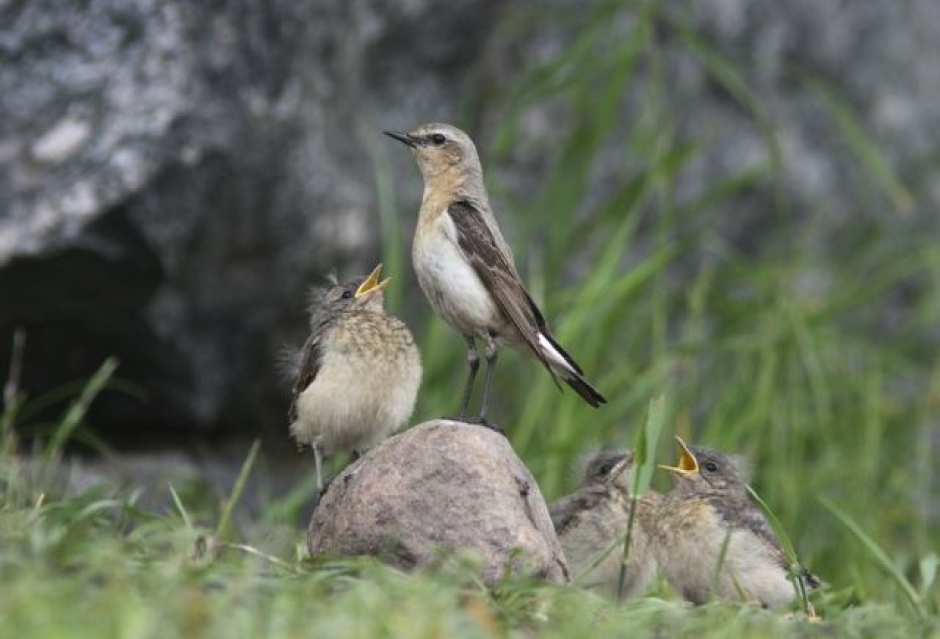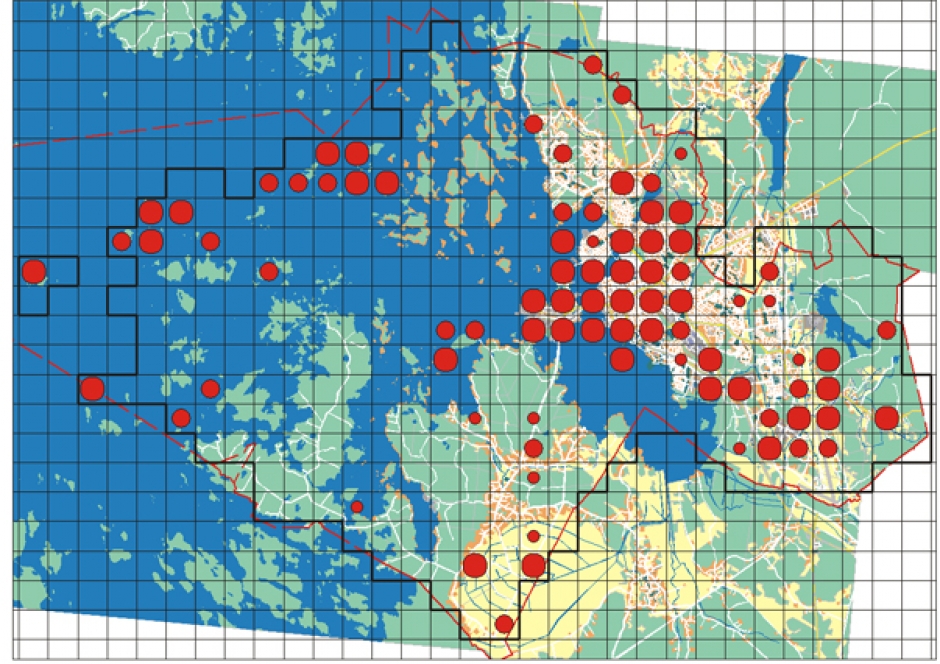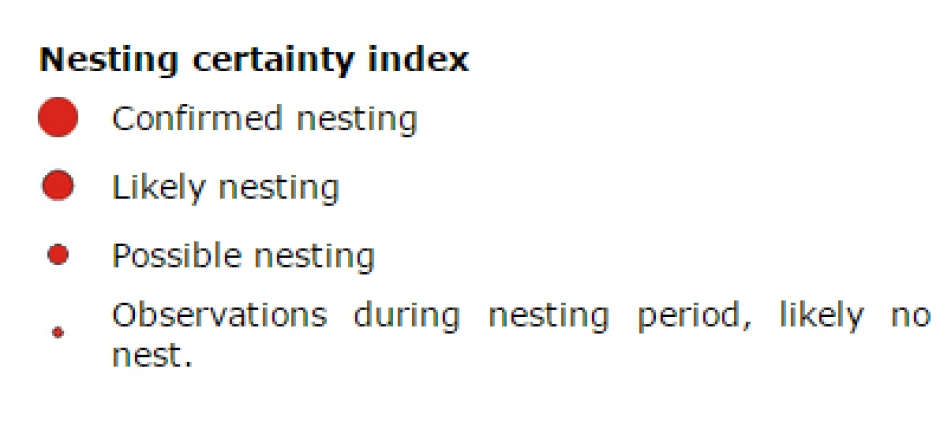Northern Wheatear
Oenanthe oenanthe

General information. The northern wheatear is easily identified because of its black and white plumage. The main colors of the male are the blue-gray back, black wings and white belly. The female has softer hued feathers and more poignantly, the adamant black ‘face mask’ of the male is absent from the females characteristics. The black T on the tail is discernable even from a distance. The northern wheatear is a vulnerable species according to Finland’s threat classification system.
- Length about 15 cm
- Nests in rock crevices, among roots, building cavities and similar areas
- Winters in Africa
- Feeds on insects and spiders
Habitat. The habitat of the northern wheatear are mainly open areas. It thrives in industrial areas, barrens, forest clearings, farmlands and on barren, rocky islands in the archipelago. Overall, it is, however, a relatively sparse nester. The total population of the northern wheatear in Finland estimated to roughly 250 000 pairs.
Distribution in Vaasa. The occurrence of northern wheatear in Vaasa is divided into two areas. The species has been found nesting near built-up areas, particularly in the waterfront zone. It is also one of the more common passerine birds of the outer archipelago. The Gerby and Sundom archipelago provide less-suitable habitats for the northern wheatear. The species was observed in approximately 80 survey blocks during the surveying time period.


